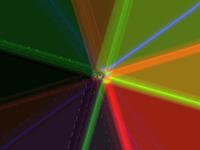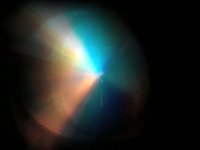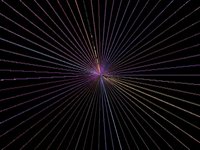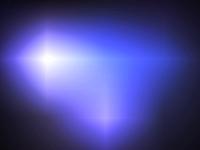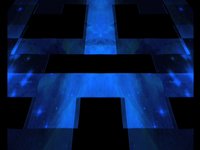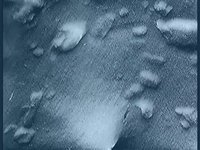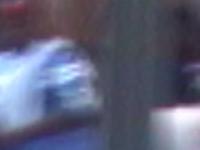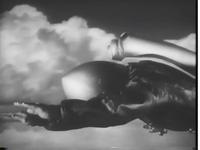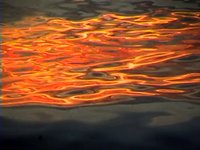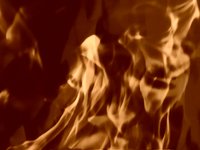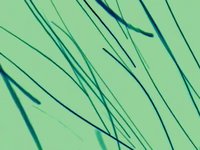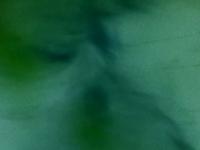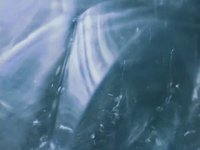| Perhaps the most important accomplishment of our times has been the expansion of the domain of humankind into the space above our planet. In a thousand years, our wars, treaties, and political contests will, for the most part, have long since been forgotten. If we are remembered at all, it will be because we are the ones who began the exploration above. This music has been inspired by these early efforts and celebrates these accomplishments. It is my hope that the beauties and complexities of these compositions convey a sense of what has been discovered thus far and hint at some of the further wonders that remain to be discovered. | |
Selected Nebulae, by Samuel Pellman |
|
Selected Nebulae consists of a suite of short movements inspired by images taken of nebulae in deep space by the orbiting “Great Observatories” (Hubble, Spitzer, Chandra, and Compton). The technology of the space age has been accompanied by the development of digital audio technology that has made it possible for a composer to depict the unusual conditions and environments that our exploration of space has revealed to us. These short pieces have been composed for virtual instruments that have been very carefully tuned, in most cases, according to the simple-ratio arithmetic of just intonation. The computer has also been employed to execute algorithmic processes to assist the composer in the design of sonic textures reminiscent of the richness and ethereality of the serene and immense objects featured in the Great Observatory photography. All of these compositions have been realized with a Symbolic Sound Kyma system. Additional aspects of the sound design were implemented with Max/MSP/Jitter, Logic, and Pro Tools. To experience versions of these pieces that are accompanied by videos, created in collaboration with video artist Miranda Raimondi, visit the Selected Nebulae album on vimeo.com. |
|
| The recording of Selected Nebulae is now available on iTunes and on CDbaby as a compact disc or as downloadable tracks. | |
M45 |
for digital sounds In m45 an algorithm for generating cellular automata has shaped the dynamic harmonic structure of the long bass tones and the rhythms of the “celestial handbells.” The pitch relationships among the drones are governed by a technique of adaptive just intonation, and the pitch relationships among the bells are based on a scale formed of four tones that are equal-tempered divisions of a pure major sixth Click to hear a stereo mix of the surround sound version: mp3 file (2.8 MB) Click here to go to vimeo.com to see the video by Miranda Raimondi. |
NGC 2080 |
for digital sounds in just intonation The music for ngc2080 features an extended melody for a digitally re-synthesized hybrid of central Asian woodwind instruments. It is tuned in 7-limit just intonation. Click to hear a stereo mix of the surround sound version: mp3 file (3.5 MB) Click here to go to vimeo.com to see a video by Miranda Raimondi.
|
NGC 2818 |
for digital sounds in just intonation ngc2818 features an extended melody performed on a physical model created by Harm Visser of a plucked metal-stringed instrument, tuned in 5-limit just intonation. The cascading gestures in the accompaniment are performed on a physical model of a nylon-stringed harp. The burbling, vibraphone-like sounds that also accompany the melody have been patterned by a second-order Markov algorithm. Click to hear a stereo mix of the surround sound version: mp3 file (2.7 MB) Click here to go to vimeo.com to see a video by Miranda Raimondi.
|
3C461 |
for digital sounds in just intonation 3C461 is tuned in 5-limit just intonation and consists of five streams of alternating tones whose patterns of pitch and rhythm have been generated by a second-order Markov algorithm. Click to hear a stereo mix of the surround sound version: mp3 file (3.6 MB)
|
M17 |
for digital sounds in just intonation An extended melody, with many microtonal trills and subtle vibrato effects, is performed by a physical model of an Armenian duduk as the foreground element of m17. This is accompanied by plucked-string drones and shimmering bells, similarly modeled on the acoustical properties of actual instruments. The pitches of the movement are tuned in 7-limit just intonation and drawn from the Lydian-dominant scale Click to hear a stereo mix of the surround sound version: mp3 file (4 MB) Click here to go to vimeo.com to see a video by Miranda Raimondi. |
NGC 1999 |
for digital sounds in just intonation The pitches for ngc1999 are tuned in a 7-limit just intonation. Click to hear a stereo mix of the surround sound version: mp3 file (2.6 MB) Click here to go to vimeo.com to see the video by Miranda Raimondi. |
NGC 6357 |
for digital sounds in just intonation An algorithm for generating cellular automata has shaped the voicing of the repeated chords in the opening passage of ngc6357 (and in subsequent recurrences of this texture) and has determined the selection of pitches in the more pointillistic passages that provide contrasting textures. The pitches are tuned in a 5-limit just intonation and are sounded by physical modeling instruments developed for the Kyma by Harm Visser. Click to hear a stereo mix of the surround sound version: mp3 file (2.6 MB) Click here to go to vimeo.com to see a video by Miranda Raimondi. |
Selected Planets, by Samuel Pellman |
|||
| The innova recording of Selected Planets is available on iTunes as a compact disc or as downloadable tracks. | |||
for digital sounds Click here to go to vimeo.com to see the video by Lauren Koss. During the second half of the twentieth century, we began to break free of the bonds of our planet's gravity and began to explore the worlds in the space above the blanket of our atmosphere. Among the first of these worlds visited by our robotic explorers was the planet Mercury, named for the mythological messenger of the gods. When visited by the Mariner 10 spacecraft in the early 1970's it was discovered to be an airless, superheated, heavily cratered, and essentially colorless world. But, beneath this apparent austerity is a relatively large core of turbulent, molten metal. In the next few years, this and other intriguing features of the planet will be studied by the Messenger space probe, due for launch in 2004. This piece is a tribute to the efforts of those who are pressing on with this exploration. |
|||
| for digital sounds Click to hear an audio clip from the piece:
Click here to go to vimeo.com to see the video by Lauren Koss. Perelandra was inspired by the C. S. Lewis book of that title, in which he vividly describes the colors, aromas, and other sensations of the seas, floating islands, and mountain meadows of an Eden-like planet Venus. The textures and timbres of this piece were not intentionally conceived to be reminiscences of this imaginary Venus, but it occurred to me as the creation of the piece was underway that this was how it was turning out. To enable a solo performer to weave these rich and intricate textures, a computer is employed to "listen" to the patterns the musician plays at the beginning of the piece. Subsequently, as the musician plays designated "hot" keys, the computer creates variations of these patterns, thus providing a background for the performance of newer patterns by the musician. The computer then creates variations of these new patterns, and the piece proceeds to the point where the computer is enabled to take over very nearly the entire performance, as if the musician is being assisted by unseen companions. |
|||
for digital sounds Click here to go to vimeo.com to see the video by Lauren Koss. The Home Planet consists almost exclusively of environmental sounds that were recorded within a short distance of my home. As with many of the classic concrète works of the 1950's, the listener can often identify familiar sounds (for instance, of birds singing at dawn, the bells of a nearby church, telephone touch-tones, lambs and chickens on a friend's farm, an auctioneer, a toy train whistle, a passing truck, children's voices, a brook in a nearby woods, etc.). These familiar sounds are, in effect, "themes" and are subjected to an enormous range of transformation by such classical techniques as speed transposition, reversal, multiple-delay, and filtering, as well as more recent techniques, such as granulation, time stretching, and vocoding. Perhaps this digital musique concrète can provide a sense of the musicality that can be heard in the sounds of a summer day in upstate New York. |
|||
| |
|||
for digital sounds Click to hear a 39 second audio clip from a later section of the piece: mp3 file (608K) Click here to go to vimeo.com to see the video by Lauren Koss! Click here to go to vimeo.com to see an alternate video, in HD, that I completed (with the assistance of Ben Salzman) in 2011. The music for this piece was completed on the twentieth anniversary of the first successful landing of a craft from Earth on the planet Mars on July 20, 1976. For many people, the Viking missions affirmed a sense that humankind was about to commence an extraordinarily significant period of historical development. The title of the work, Ares Vallis ("Mars Valley"), refers to an ancient floodplain on Mars that on July 4, 1997 became the landing site for the Mars Pathfinder spacecraft. Although the pace of exploration has turned out to be much slower than many of us had hoped, the dream remains. |
|||
| Or click here to go to vimeo.com to see the final segment of this latest video. | |||
for electroacoustic sounds Click here to go to vimeo.com to see the video by Lauren Koss. Perijove was composed in 2000 to commemorate the arrival at the planet Jupiter of the Galileo space probe on December 7, 1995. The sounds for this piece were generated on a Synton modular analog synthesizer controlled (via an Expressionist CV interface) by a MAX patch on a Macintosh computer. This MAX patch, among other things, algorithmically determined the pitches and rhythms of the many clouds of sounds in this piece by applying second-order Markov probabilities derived from brief MIDI files improvised by the composer. These clouds and other sounds were then digitally processed and overdubbed in Digidesign's Pro Tools. |
|||
for digital sounds Or, click to hear a 2011 remix of Guirlandes: mp3 file (3.7 MB) Click here to go to vimeo.com to see the video by Lauren Koss. Guirlandes ("Garlands") is closely based on the motivic and harmonic patterns of a piano work of the same name composed in 1914 by Alexander Scriabin (Opus 73, No. 1). Here, however, the music is scored primarily for the sounds of mallet instruments and consists of masses of very rapid tremolos. These masses are then reshaped in a variety of ways, including multiple delays and granulation. Like the particles in planetary rings, these grains and masses of tones weave through the space of the music while shuffling in and out of audibility. |
|||
for digital sounds Click here to go to vimeo.com to see the video by Lauren Koss. When Voyager 2 passed by Uranus in January of 1986 it returned photographs of a big, blue-green ball of gas with few readily discernible features. More recent observations from Earth-orbit have confirmed evidence of great winds and related meteorological phenomena in the atmosphere that is Uranus. More detailed conceptions of the Uranian environment, however, must remain in our imaginations, at least for now. |
|||
for digital sounds Click here to go to vimeo.com to see the video by Lauren Koss. Neptune Fly-by was inspired by the August 1989 encounter of the Voyager 2 spacecraft with the planet Neptune. The piece is constructed of five phrases, each of which consists of bands of sustained pitches that gradually modulate in timbre, vibrato depth, and spatial placement. These pitch bands are occasionally embellished by clouds of bell-like tones that are also modulated in timbre, depth of effects processing, and spatial placement. |
|||
for digital sounds Click here to go to vimeo.com to see the video by Lauren Koss. Dancing in the Dark was inspired by a Hubble Space Telescope
image of the planet Pluto and its relatively large satellite, Charon. The
movement consists of a set of nine variations that feature a variety of
regular rhythmic and timbral patterns. The result is set of "channels"
of timbral continuities that operate at a deeper layer of the structure.
Occasionally, as in variations 2 and 8, the coexistence of these timbral
channels results in an aural illusion, an ambiguity of foreground and middleground,
that is quite similar to such well-known visual illusions as those seen
in Escher drawings. |
|||
other space music: |
|||
| Warp 9 | for 'cello octet and digitally-processed 'cello sounds Click to hear a 34 second audio clip: mp3 file (548 K) |
||
| Sagittarius in Transit | for string quartet Click to hear a 73 second audio clip: mp3 file (1139 K) |
||
